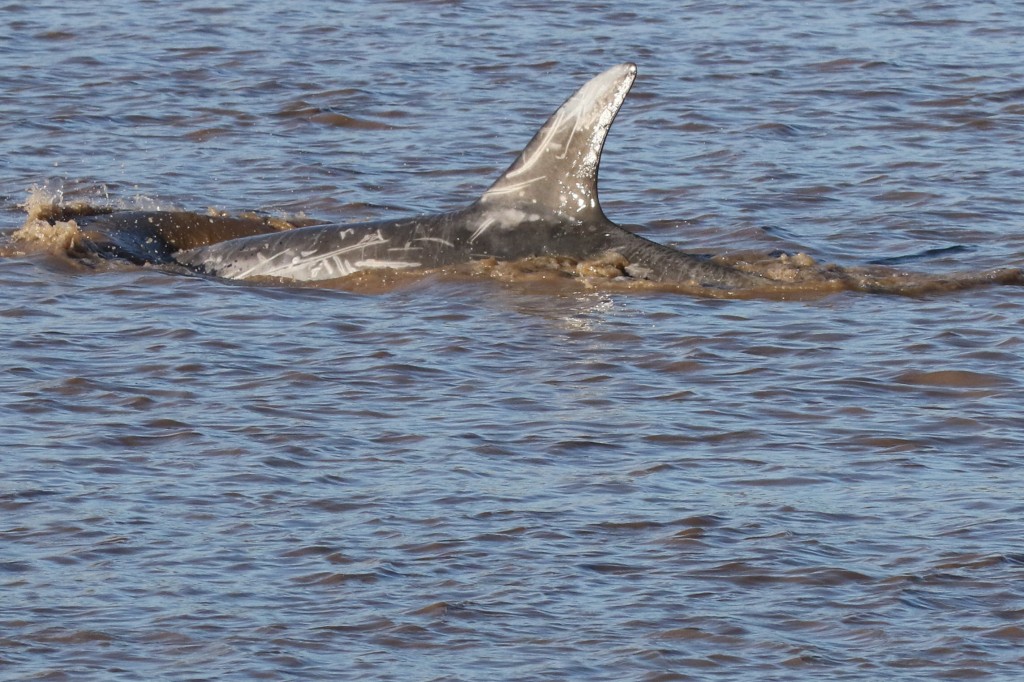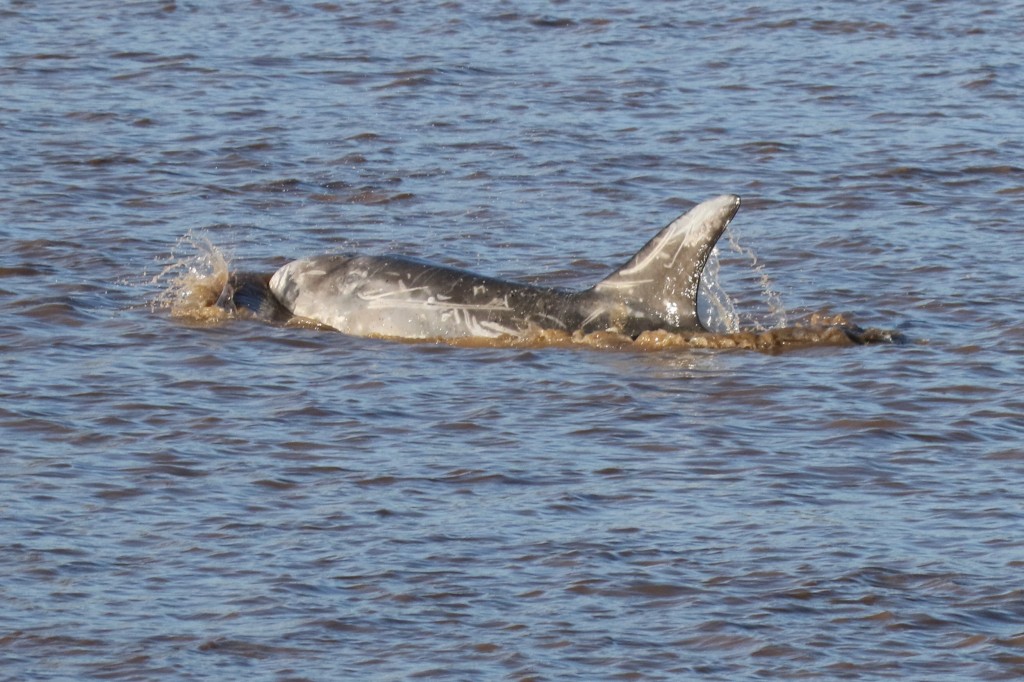The Sea Watch Foundation’s Regional Coordinator for Yorkshire, Robin Petch, had a chat with our Sightings Officer, Chiara Bertulli, after he got called about a Risso’s dolphin which had been sighted in the river Ouse yesterday afternoon. This is Robin’s story.
Skelton is a small village in East Yorkshire, on the banks of the River Ouse not far from Goole. When a neighbour of Phil Dixon opened her bedroom window on the morning of 12th November 2018 she thought she was hallucinating as there appeared to be a dolphin in the river. At 0935 she called her friend, who told her husband Phil Dixon, who phoned the Coastguard, who told him to call British Divers Marine Life Rescue who in turn called me, Robin Petch, Sea Watch Foundation Yorkshire Co-ordinator and Chair of Trustees. It is Phil who provided the photographs included with the blog.
I met up with David Leng, BDMLR Yorkshire Co-ordinator, who confirmed that it was indeed a Risso’s dolphin.
Like me, he had expected it to be a mis-identified harbour porpoise, which are seen up as far as the Ouse Bridge from time to time. He had photographs taken by Phil earlier to prove it and had also seen it himself, swimming into the current near the railway bridge over the river. It appeared to be behaving normally, perhaps even feeding, but had since disappeared. More volunteers soon arrived but none of us were to see the dolphin again that day, despite checking the river up and downstream from Skelton. Interestingly, late in the day, David met a lady at Saltmarsh further downstream who not only believed she had seen the dolphin 10 days ago but claimed it had visited around the same time last year! Hopefully it has now swum back to the Humber and out to sea but time will tell.

One of the most distinctive features of Risso’s dolphins is a vertical crease on the front of the melon, and at sea it is the coloration and scarring. Photo credit: Phil Dixon.
Risso’s dolphins have occasionally been seen in the North Sea but rarely so far south and they are normally found in deeper water off the northern and western coast of the UK. Their preferred diet is squid but they do also eat fish and crustaceans so it would be able to feed in the Ouse and Humber but it is not a good environment for it as it is very tidal and extremely shallow in places as well as being quite busy with barges and coastal freighters at times. The scratches and marks on the dolphin’s body are caused partly by competition between males and also by the beaks and tentacles of their prey. As can be seen from Phil’s photographs they are a robust dolphin with a large dorsal fin, typically up to 3.5m in length and around 400kg. Unlike most dolphins they have no beak, the head shape being bulbous and rounded and similar to that of a Pilot Whale.
Robin Petch – Sea Watch Foundation Chair of Trustees and Yorkshire Co-ordinator

























